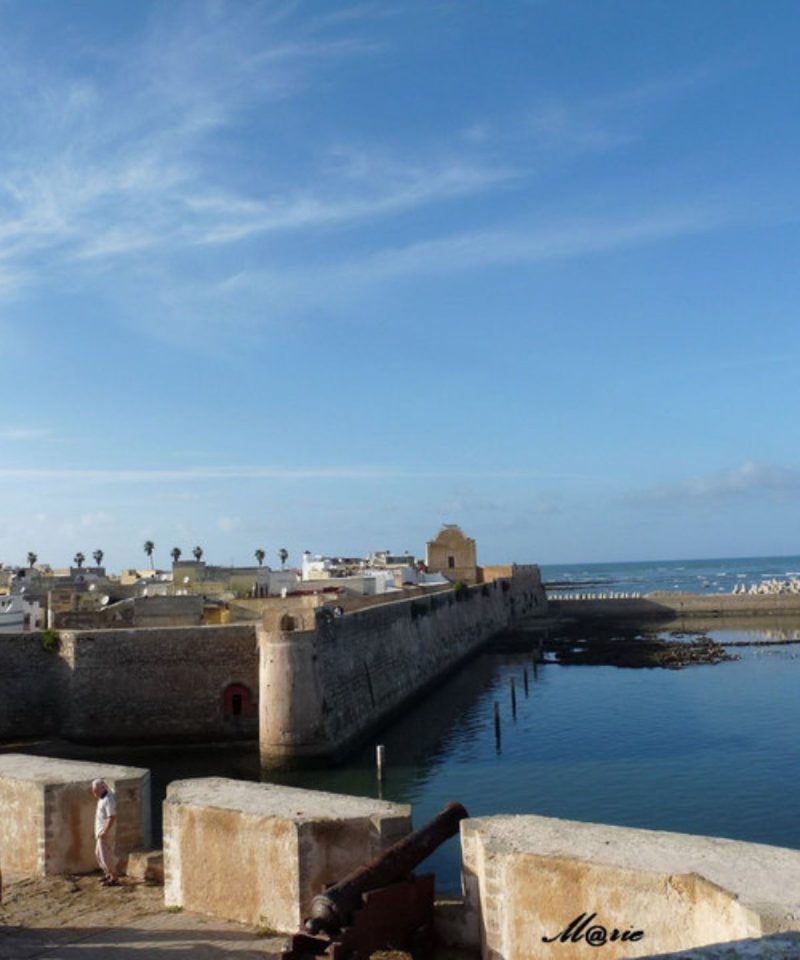El Jadida (Arabic: الجديدة, romanized: al-Jadīda, [ald͡ʒadiːda]; originally known in Berber as Maziɣen or Mazighen; known in Portuguese as Mazagão) is a major port city on the Atlantic coast of Morocco, located 96 km south of the city of Casablanca, in the province of El Jadida and the region of Casablanca-Settat. It has a population of 170,956 as of 2022.
The fortified city, built by the Portuguese at the beginning of the 16th century and named Mazagan (Mazagão in Portuguese), was given up by the Portuguese in 1769 and incorporated into Morocco.
El Jadida’s old city sea walls are one of the Seven Wonders of Portuguese Origin in the World. The Portuguese Fortified City of Mazagan was registered as a UNESCO World Heritage Site in 2004, on the basis of its status as an “outstanding example of the interchange of influences between European and Moroccan cultures” and as an “early example of the realisation of the Renaissance ideals integrated with Portuguese construction technology”. According to UNESCO, the most important buildings from the Portuguese period are the cistern and the Church of the Assumption, both in a Manueline style.
The city, and particularly its neighbouring town of Sidi Bouzid, becomes extremely busy in the summer season with an influx of mainly Moroccan holiday-makers. Nearby is the five-star resort complex of Mazagan, which attracts some middle-class and upper-class Moroccans as well as many international visitors from the Arabian Peninsula as well as from Europe and beyond. Mazagan complex has a golf course designed by Gary Player, casino, nightclub and restaurants. Between Mazagan complex and El Jadida is the Pullman Hotel, attached to which is Royal Golf El Jadida, another 18-hole course. The presence of nearby ports and factories is responsible for the pollution of El Jadida’s beaches.
The city is expanding as of 2014, partly as a result of increased activity at the nearby Jorf Lasfar port and its industrial zone.
Names
The original name of the city in the Berber language was: Maziɣen / Mazighen, which means “The Berbers”. El Jadida’s other names and nicknames in other languages were: Cap Soleis, Portus Rutilis, Rusibis, Mazighen (Arabic: مازيغن), al-Breyja (Arabic: البريجة), Mazagão, al-Mahdouma (Arabic: المهدومة) and Mazagan.
History
Prior to the arrival of the Portuguese, an anchorage used by boats appears to have existed at the current site of El Jadida throughout the Middle Ages and in ancient times. The name Mazighan was first documented by the 11th-century Arab geographer al-Bakri. In 1502 a Portuguese captain, Jorge de Mello, landed at this location, allgedly driven here by a storm. He and his crew took refuge in an abandoned tower, called al-Briya or al-Burayja, to defend themselves against any potential attack by the locals. After returning to Portugal, he obtained permission from the Portuguese king, Dom Manuel, to found a fortress here in 1505, but evidence indicates that he did not carry this out, as when the Portuguese army passed here on their way to conquer Azemmour in 1513 they found nothing but the old tower.
As Azemmour was difficult to access, the Portuguese returned and built a citadel at the more accessible Mazighan in the summer of 1514. This citadel was a rectangular building with four towers, one of which was the old tower that already stood here. The architects were two brothers, Diego and Francisco de Arruda. The location then became known in the Portuguese language as Mazagão. During the next few decades the Sa’dids rose to power and began expelling the Portuguese from their coastal fortresses, with the most significant event being their expulsion from Santa Cruz (present-day Agadir) in 1541. In response, the Portuguese king John III ordered the evacuation of Portuguese positions at Azemmour and Safi and concentrated on building a more defensible position at Mazagão instead. As a result, the Portuguese fortification was expanded into the larger walled fortress we see today in 1541.
The Kingdom of Portugal would continue to control the city until 1769, when they abandoned Mazagão, their last territory in Morocco. Upon their forced departure, the Portuguese destroyed the Governor’s Bastion. Most of the Portuguese inhabitants were sent to the colony of Brazil, where they founded a new settlement called Nova Mazagão (the present Mazagão in the state of Amapá). The city was then taken over by Sultan Mohammed ben Abdallah in 1769 and remained largely uninhabited, having been dubbed al-Mahdouma (‘The Ruined’). Eventually, Sultan Abd al-Rahman of Morocco ordered that a mosque be built, and the destroyed portions of the city were rebuilt during his reign in the early nineteenth-century. The reinvigorated city was renamed al-Jadida, meaning ‘The New’. The town underwent a revival and soon outgrew Azemmour as the most important city in the area. Alongside the Muslim population was also a community of Jews, who participated in the city’s revival.

